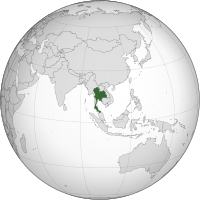
Photo from wikipedia
A partisan divide over LGBT rights has emerged in the U.S. Yet unlike other issues on which the parties have traded places or polarized, most of the change on gay… Click to show full abstract
A partisan divide over LGBT rights has emerged in the U.S. Yet unlike other issues on which the parties have traded places or polarized, most of the change on gay rights has occurred within one party, the Democrats. How did this unusual change occur? LGBT rights was originally a fringe cause, rejected by most politicians in both parties. As gay rights activists slowly became more prominent in the Democratic Party, many politicians adapted, abandoning earlier positions informed by their personal backgrounds and state or district constituencies. Meanwhile, incorporating the religious right led most Republicans to maintain the anti-LGBT rights stand that was once common to both parties, even as public opinion shifted. The result was a partisan divide in this issue area that had consequences for policy. The role of adaptation by incumbents in producing it—contrary to some prominent models—is evident in both Congressional co-sponsorship and roll-call data. The growing party divide is also evident in platforms. These findings contribute to a broader understanding of how party position change occurs.
Journal Title: Political Research Quarterly
Year Published: 2023
Link to full text (if available)
Share on Social Media: Sign Up to like & get
recommendations!